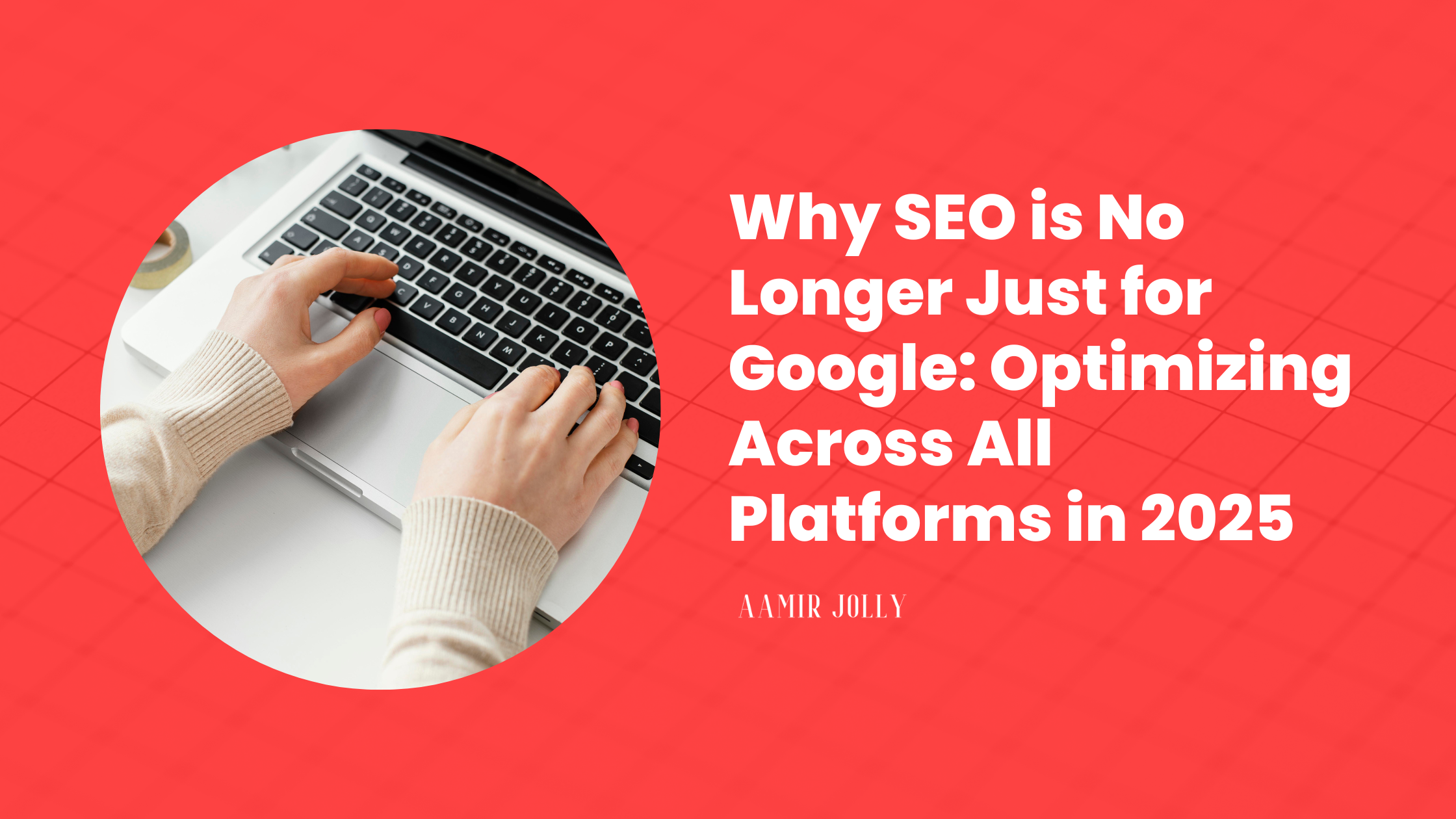Why SEO is No Longer Just for Google: Optimizing Across All Platforms in 2025
SEO has transformed significantly over the years, and in 2025, it’s no longer just about ranking on Google. With the rise of social media search, AI-driven assistants, video platforms, and e-commerce marketplaces, users are searching across multiple platforms to find the content, products, and answers they need.
To stay ahead, businesses must adapt their SEO strategies beyond traditional search engines. Success now depends on multi-platform visibility, user engagement, and optimizing for AI-driven algorithms.
Why SEO is Expanding Beyond Google
1. Search Behavior Has Changed
People no longer rely solely on Google. Different platforms cater to different types of search queries:
- Social Media Search – Platforms like TikTok, Instagram, and LinkedIn are becoming search engines in their own right. Gen Z users, for example, prefer TikTok over Google for discovering new products, trends, and even educational content.
- E-commerce Search – Instead of Googling products, users head directly to Amazon, Etsy, and Shopify to compare prices, read reviews, and make purchases.
- AI & Voice Search – With the rise of ChatGPT, Siri, Alexa, and Google Assistant, users are asking more conversational and intent-driven questions.
If your business isn’t optimizing for these alternative search engines, you’re missing out on valuable traffic and sales.
2. AI and Voice Search Are Taking Over
AI-powered tools like ChatGPT, Google Bard, and AI-driven search assistants have changed how people find information.
- Users now ask full questions instead of typing fragmented keywords.
- AI tools summarize content rather than linking to traditional search results.
- Voice search (Siri, Alexa, Google Assistant) requires businesses to optimize for natural language and conversational queries.
🔹 What this means for SEO: Businesses must create content that directly answers questions in a concise, conversational, and structured manner to stay relevant.
3. The Rise of Social Media & Video Search
Social media platforms prioritize engagement-based discovery over traditional keyword rankings. Platforms like YouTube, TikTok, Instagram, and Facebook use advanced AI algorithms to push engaging content to users based on interests, interactions, and watch time.
To optimize for social media SEO, businesses should:
✔ Use relevant hashtags & keywords in captions and descriptions.
✔ Optimize video content for watch time and engagement.
✔ Leverage trending audio & topics to increase visibility.
✔ Encourage shares, comments, and saves, as these signals boost content ranking.
💡 Example: A short, engaging TikTok video on “Best Skincare Routines” can rank higher on TikTok’s search than a traditional blog post on Google.
How to Optimize Across Multiple Platforms
🔹 1. Social Media SEO
- Optimize post captions, hashtags, and alt text with relevant keywords.
- Use engaging, shareable content like carousels, infographics, and reels.
- Post content consistently to stay visible on platform algorithms.
🔹 2. Video SEO
- Optimize video titles, descriptions, tags, and transcripts for search.
- Use engaging thumbnails to boost click-through rates.
- Keep content informative, concise, and highly engaging to improve watch time.
🔹 3. AI & Voice Search Optimization
- Use conversational, natural language in content.
- Focus on FAQ-style content that directly answers user queries.
- Implement structured data (schema markup) to help AI understand content better.
🔹 4. E-commerce SEO (Amazon, Shopify, Etsy)
- Optimize product titles, descriptions, and reviews with target keywords.
- Ensure high-quality images and videos to improve click-through rates.
- Encourage customer reviews as they boost rankings on e-commerce platforms.
🔹 5. Content Repurposing
- Convert blog posts into TikTok videos, Instagram carousels, and LinkedIn posts to maximize reach.
- Create short-form videos summarizing long-form content for better engagement.
- Distribute content across multiple platforms to drive visibility and traffic.
The Future of SEO in 2025
SEO in 2025 is about multi-platform dominance. Businesses that succeed will:
✅ Adapt to search trends on multiple platforms, not just Google.
✅ Optimize for AI-driven, voice, and conversational search queries.
✅ Leverage engaging video & social media content to drive visibility.
✅ Focus on user intent and experience, as engagement matters more than just rankings.
🚀 Final Thought: SEO is evolving, and so should your strategy. Don’t limit yourself to Google—embrace multi-platform optimization to stay ahead in 2025!
FAQs
Have a query? Please check this question and answers
SEO has expanded because users now search across multiple platforms like TikTok, YouTube, Amazon, and AI-driven assistants like ChatGPT. Businesses must optimize for these channels to reach their audience where they actually search.
Use relevant hashtags, optimize captions with keywords, engage with your audience, and create shareable content like videos, carousels, and infographics. Each platform has its own algorithm, so tailor content accordingly.
The rise of AI-driven search and voice assistants is a game-changer. Optimizing for conversational queries, using structured data, and creating direct-answer content will be crucial for ranking in AI-powered search results.

